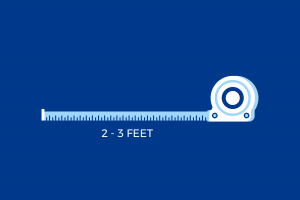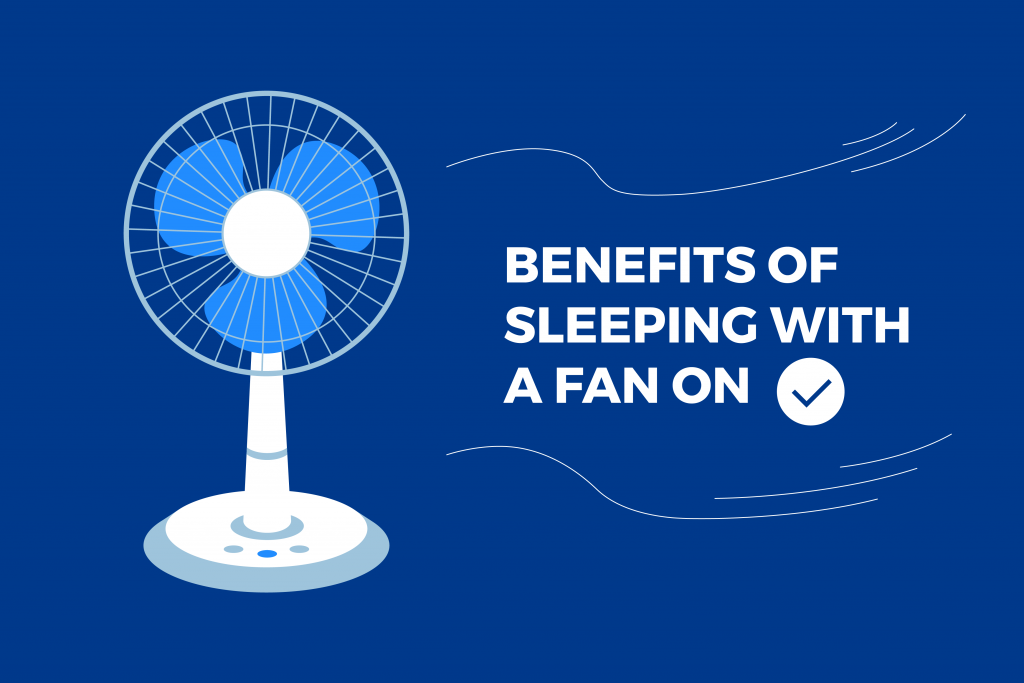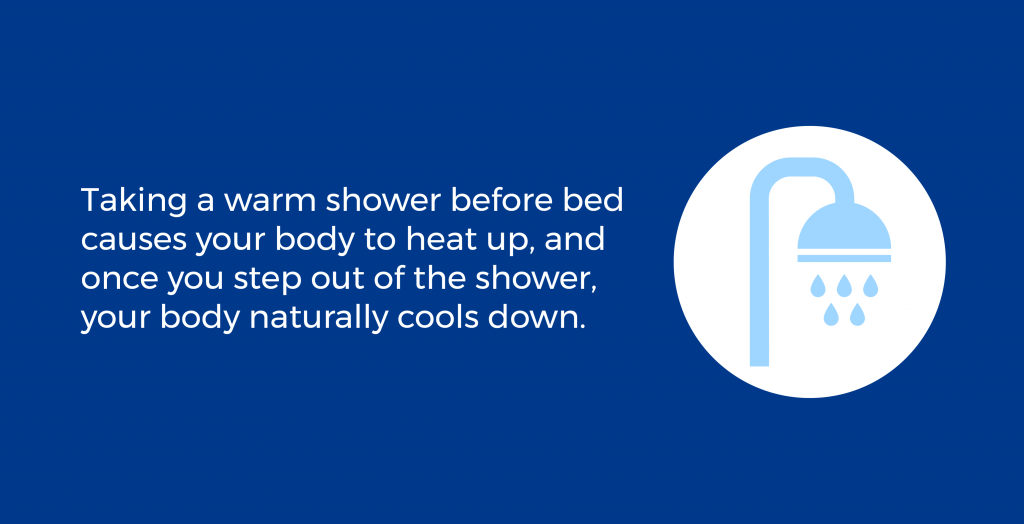Key Takeaways
- Benefits of Sleeping With a Fan: Sleeping with a fan on can help maintain a cooler room temperature, reduce electricity bills compared to using an air conditioner, and promote air circulation. It can be particularly beneficial for hot sleepers, as it helps prevent overheating and sweating during the night.
- Consider the Potential Downsides: Sleeping with a fan on can have some downsides, including the potential to trigger allergies, cause congestion, dry out your eyes and skin, and aggravate muscle aches. The noise from the fan might also be either soothing or disruptive, depending on your preference.
- Minimize Negative Effects: To minimize these negative effects, you can keep the fan at a distance, set a timer to turn it off after a few hours, use air filters, place a bowl of water in front of the fan to add moisture to the air, or try draping a damp cloth over the fan.
As spring makes way for summer, it’s about time your fan gets into action. The soothing air from your fan dries sweat and cools you down, but is sleeping with a fan on bad for health?
The constant breeze may impact the health of some people, while for others sleeping with the fan on enhances comfort. In this article, we discuss how sleeping with a fan can affect your health, ways to tackle the downsides of keeping the fan on, and why using a fan is still beneficial for many people.
Downsides of Sleeping With a Fan On

Most people enjoy the cooling and comfortable breeze of a fan. But excess wind makes the air dry. When you sleep, this dry air may affect your breathing, causing sleep disruptions.
Using a fan at night can even aggravate your allergies, making you uncomfortable throughout the night. Below, we list 4 disadvantages of sleeping with the fan on.
Triggers Allergies
Along with air, fans also circulate dust, dust mites, spores, pollen, and other allergens in the room. Inhaling these allergens Verified Source National Library of Medicine (NIH) World’s largest medical library, making biomedical data and information more accessible. View source could trigger reactions such as excessive sneezing, runny nose, watery eyes, itchy throat, and breathing difficulties. If you are prone to asthma, allergies, and hay fever, these indoor allergens may worsen your symptoms.
Allergen accumulation is also one of the disadvantages of old mattresses, so if you keep the fan on it’s wise to protect it with an allergen-proof protector.
Causes Congestion
Leaving the fan on can dry out your nose and throat. Excessive dryness triggers the overproduction of mucus, causing sinusitis, headaches, and a stuffy nose.
To alleviate the dryness, you can drink some water, but waking up to drink over and over interrupts sleep.
Dries Eyes and Skin
If you sleep near a fan, the air from the fan can dry your eyes out. Your eyes may open slightly and occasionally as you sleep, and the air flow may dry them out, causing you to wake up with dry eyes.
A constant blast of air may also cause dry skin and irritation. Using moisturizers at bedtime as part of a nighttime skin routine may tackle the problem to some extent. Eye drops meant to relieve itchy or dry eyes can also mitigate irritation.
May Aggravate Muscle Aches
Cold air circulating close to you can cause muscle contractions. If you already have pre-existing muscle pain, it may worsen when you sleep with the fan on. The concentrated flow of cool air makes muscles tense up and cramp.
Sleeping with the air conditioner on at night can cause the same problem. To prevent waking up sore, it’s best to set your room temperature between 60 and 67 degrees Fahrenheit. And if you sleep with the air conditioning on, try to avoid setting up your bed in a spot where the air will be directly blowing on you.
Noisy Fan Blades
While how much noise a fan makes varies by model, it’s unlikely you’ll have one that’s whisper-quiet. For some the white noise can be soothing, using the fan to block out noise while sleeping.
However, others may find the sound distracting and that it keeps them from easily falling asleep. Whether or not background noise like a fan running helps you fall asleep may take a little bit of experimention.
Minimizing the Negative Effects of Sleeping With the Fan On
Though sleeping with the fan on may be bad for your health, there are ways to minimize its negative effects. The fan’s speed and distance from you determine its degree of impact on your health. Keeping the fan further away from you or setting a timer can prevent nasal congestion, headaches, muscle aches, and eye dryness.
Buy a Rotating Fan
 As the name suggests, a rotating fan prevents the constant flow of air in one direction, instead circulating air in a rolling wave pattern. This type of fan is also called an oscillating fan, which makes it more clear that the head moves from side to side and it’s not simply the blades that are rotating.
As the name suggests, a rotating fan prevents the constant flow of air in one direction, instead circulating air in a rolling wave pattern. This type of fan is also called an oscillating fan, which makes it more clear that the head moves from side to side and it’s not simply the blades that are rotating.
The fan moves on a set track, shifting back and forth for a wave effect instead of pushing air directly forward in a straight line. Evenly distributed airflow keeps you cool while potentially preventing stiff neck, muscle aches, dry nose, mouth, and eyes.
Set a Timer
 You can set a timer on the fan so it turns off an hour or a couple of hours after your bedtime. It eliminates the risk of a cold breeze blowing throughout the night, which can leave you feeling uncomfortable. Setting a timer can also keep you from using electricity the entire night, decreasing your bill.
You can set a timer on the fan so it turns off an hour or a couple of hours after your bedtime. It eliminates the risk of a cold breeze blowing throughout the night, which can leave you feeling uncomfortable. Setting a timer can also keep you from using electricity the entire night, decreasing your bill.
Even if your fan does not have a built-in timer, you can look into plug-in timers that are designed to shut off electronics after a certain period of time.
Keep Fan at a Distance
 When you’ve got a little mini plug-in fan that you can set up anywhere, it’s best not to put it on your nightstand beside the bed. Having these breeze blasting directly into your face at such a distance
When you’ve got a little mini plug-in fan that you can set up anywhere, it’s best not to put it on your nightstand beside the bed. Having these breeze blasting directly into your face at such a distance
Instead, if you keep the fan 2 to 3 feet away, the concentrated airflow won’t affect you as much but will still help keep you cool. You’ll have a light breezy sleeping environment instead of a gust of air blowing directly on you.
If you sleep with the ceiling fan on, keep the fan on a moderate speed to prevent excessive dryness.
Use Air Filters
Air filters in the room can reduce the circulation of dust mites, spores, and other allergens. Using one may be beneficial for those prone to allergies or sleepers living with asthma, along with other natural remedies for seasonal allergies.
Sleeping with an air purifier can not only keep your bedroom free of allergens and other irritants, but it can also ensure it maintains a clean, fresh smell.
Use a Water Bowl in Front of the Fan
To minimize the way a fan can dry out the skin, nose, throat, mouth, and eyes, set a bowl of water in front of it. This trick can add moisture to the air in front of the fan, ensuring the fan isn’t just pushing dry air your way. During the summer, you can slip some ice cubes into the bowl to keep the water cold, further cooling down your room while using less energy.
Alternatively, you can try draping a wet cloth over the fan. Make sure you wring out excess water first, as you want a mildly damp towel and not one that is sopping wet. As the fan blows air through the damp towel, the moisture will circulate and cool the room. When trying to sleep during a heatwave, you can hang similarly soggy towels in front of the doors and windows to better cool down the room.
Benefits of Sleeping With a Fan On

It’s difficult to imagine a hot and humid summer without a fan at night. You need a fan to keep you cool when the temperatures soar.
“The ambient temperature plays an important role in sleep,” says Dr. Nayantara Santhi. “Humans are physiologically wired to sleep at night which is the coolest time of the day.”
“Not surprisingly a cooler temperature facilitates sleep. Did you know that your core body temperature is also lower during sleep than during waking hours? Furthermore, the circadian rhythm of your core body temperature reaches its lowest during the night. So keeping the room cool at night will enhance your sleep.”
To reap the benefits of the cool air while minimizing the downsides, keep your fan at a distance and on medium speed.
Cuts Your Electricity Bill
 Though a fan isn’t as effective as an air conditioner, it consumes less energy. You can save on electricity bills during the summer months by using your fan instead of the air conditioner.
Though a fan isn’t as effective as an air conditioner, it consumes less energy. You can save on electricity bills during the summer months by using your fan instead of the air conditioner.
To make the air from your fan even cooler, you can freeze a few water bottles throughout the day and keep them on a tray in front of the fan at bedtime. The air passing over these freezing water bottles brings a cool breeze much like an air conditioner. Though you may not feel the cool breeze through the night, it can last up to a couple of hours.
Maintains Comfort
Hot sleepers tend to wake up sweating. Disturbed sleep leads to daytime drowsiness, affecting productivity. Sleeping with the fan on at night prevents overheating. Even if you sweat at night, the breeze dries away excess moisture, keeping you cool and comfortable while you sleep.

Promotes Air Circulation
People often prefer to keep their windows closed because they don’t want to invite pollen and other allergens from outside. Without an open door or windows, your room feels stuffy because there’s no air movement.
Turning the fan on promotes air circulation in the room. Constant circulation of air throughout the night helps in maintaining a breezy and comfortable sleep environment.

Helps Prevent Sudden Infant Death Syndrome (SIDS)
Approximately 2500 infants die of SIDS every year in the United States, making SIDS the third leading cause of infant mortality. High temperatures and increased carbon dioxide levels in the room increase the risk of SIDS. According to some studies, keeping the fan on may help prevent SIDS. Circulation of air lowers room temperature and decreases the concentration of carbon dioxide, addressing some of the causes of SIDS.
Other Ways to Sleep Cooler
You may not choose to sleep with the fan on if the dry air causes you to feel uncomfortable or disrupts your sleep. But there are other measures to reduce heat while sleeping. You can follow these steps, with or without the fan, for a cooler sleeping environment.
Light-Colored Curtains
 Curtains block sunlight, keeping your room cool. So if you want to promote a sleep-inducing environment with a cool, dark bedroom, we suggest choosing a nice set of curtains.
Curtains block sunlight, keeping your room cool. So if you want to promote a sleep-inducing environment with a cool, dark bedroom, we suggest choosing a nice set of curtains.
Lighter-colored curtains are preferred because they reflect heat. Darker shades tend to absorb and trap heat. See our guide to the best and worst bedroom colors.
Use a Cool Mattress and Bedding
 Memory foam mattresses with cooling technologies, such as plant-based memory foam, gel memory foam, or latex foam may feature heat-wicking additives like copper or graphite. Innerspring and hybrid beds promote airflow within the mattress, keeping you cool too.
Memory foam mattresses with cooling technologies, such as plant-based memory foam, gel memory foam, or latex foam may feature heat-wicking additives like copper or graphite. Innerspring and hybrid beds promote airflow within the mattress, keeping you cool too.
Breathable sheets made with materials such as cotton, bamboo, and Tencel® are beneficial for hot sleepers as well. They wick away moisture and don’t trap heat.
Shower Before Bed
Taking a warm shower before bed causes your body to heat up, and once you step out of the shower, your body naturally cools down. This process of cooling keeps you comfortable and makes you fall asleep faster.
Wearing loose clothes leave room for your muscles to relax as you sleep, while a breathable fabric ensures your clothes don’t trap heat.

Our Amerisleep Mattresses
As a healthy alternative to sleeping with the fan on, you can try any one of our Amerisleep mattresses. Our beds feature plant-based oils, making them cooler than other mattresses. Our hybrid mattresses allow for even better airflow than our memory foam mattresses since they contain a layer of individually wrapped coils at the base.
Our mattress covers are made of a soft, breathable, and absorbent material to wick away heat and moisture, keeping you cool and comfortable. The Bio-Pur® material in the top comfort layer conforms to your body, providing pressure-point relief. You can choose from one of five different firmness levels to suit your comfort.
Aside from their cooling abilities, our beds are also some top-notch hypoallergenic mattresses, perfect for anyone with asthma or allergies who’s looking to improve their sleep.
“Not surprisingly, it is not just the room temperature but also the temperature regulation of our mattress that is important,” says Dr. Santhi. “A breathable cool mattress like the Amerisleep memory foam mattress or light and airy sheets are a helpful way of maintaining a conducive temperature for sleep.”
Cost of Amerisleep Mattresses
All our mattresses are manufactured in the United States, and they come with a risk-free 100-night trial. We offer a 20-year warranty, covering defects and sagging greater than an inch. That way, you can rest assured that you’re getting exactly the sleep you want and need for decades to come. No need to worry about buyer’s remorse.
| Mattress | Price |
|---|---|
| AS1 | $899 |
| AS2 | $1099 |
| AS3 | $1299 |
| AS3 Hybrid | $1499 |
| AS4 | $1299 |
| AS5 | $1899 |
| AS5 Hybrid | $2199 |
| Amerisleep Organica | $1299 |
Our Amerisleep Sheets
We have two types of sheets, our Amerisleep Percale Cotton Sheets and Amerisleep Tencel® Sheets. Both fabrics are extremely breathable. While the natural cotton fibers are light and airy, Tencel® fibers are super absorbent.
Our percale cotton sheets contain long-staple fibers, making them soft, luxurious, and durable. The Tencel® sheets are smooth and have a sheen to them. Cotton sheets get softer with every wash, while Tencel® sheets are soft from the beginning and resist wrinkling.
Aside from how naturally cooling our sheets feel, the materials establish hypoallergenic sheets, perfect for anyone who’s looking for irritant-free sleep.
Cost of Amerisleep Sheet Sets
Our sheets are available in seven standard sizes, including the difficult-to-find split-king size. All Amerisleep sheet sets include 1 oversized flat sheet, 1 fitted sheet with 18-inch deep pockets, and 2 pillow covers.
| Sheets | Price |
|---|---|
| Amerisleep Percale Cotton Sheets | $150 |
| Amerisleep Tencel® Sheets | $230 |
More Tips for the Bedroom
It’s not just a fan that can affect how you sleep. The colors of your bedroom walls, the way your furniture is arranged, and the technology you keep in your bedroom can all impact your sleep hygiene.
We have a number of guides that can help you optimize your bedroom for better sleep:
- How a Tech-Free Bedroom Creates Smarter Sleep
- Creating a Calm, Clutter-Free Bedroom
- Bedroom Feng Shui for Better Sleep: A Beginner’s Guide
- How to Cool Down a Room
- Bedroom Set-ups for Children With Autism
- Best and Worst Bedroom Colors for Sleep
- Fire Safety Tips for the Bedroom
FAQs
Is it safe to sleep with windows open at night?
Open windows improve ventilation, promoting better air circulation. Keeping windows open at night dissipates the concentration of carbon dioxide levels in the room. But whether to sleep with windows open or not is a matter of personal preference. Some people don’t feel safe with the idea of sleeping with windows open because it could invite bugs or pollen.
Do fans trigger coughing?
Dry air, whether from the fan, air conditioner, or heater, can trigger coughs. You can use a humidifier to add moisture to the air. Moist air also prevents the circulation of dust mites and other indoor air allergens, irritating your nasal passage and throat.
Can sleeping with a fan on cause headaches?
Sleeping with a fan on can cause sinus headaches. Dry air can dry up your nasal passages, leading to mucus overproduction. This excess mucus flows into your sinuses, blocking them and causing headaches.
Do fans make allergies worse?
Yes, using a fan can aggravate your allergies. As a fan forces air to circulate, dust particles and other irritants get kicked up by the breeze, making it more likely that you will inhale these allergens.
However, this only applies if the allergens are already present, as a fan will not bring in allergens in a closed room. Vacuuming frequently and keeping your bedroom tidy can minimize allergen exposure if you use a fan.
Should I sleep with a fan on if I’m sick?
That can vary by person. Some may find that a fan helps them stay cool when they’re feeling fevered, while others may find that a fan irritates their already stuffed-up sinuses. If you choose to use a fan while sleeping with a flu or cold, consider adjusting its settings or position so that it doesn’t blow directly on you.
What helps allergies while sleeping?
An air purifier is one of the best ways to keep allergy symptoms under control in the home. But while an air filter can help, also important to dust your sleeping area regularly. Minimizing the dust in the room negates the odds that you will breathe a significant amount in as you sleep. We would recommend a HEPA vaccum, designed to suck up smaller particles than the average vacuum cleaner.
You can also reduce the number of allergens that enter your bedroom. We suggest taking showers before bed to wash any off your skin, changing into clean pajamas afterward before heading into your bedroom. If you have pets, keep them out of the bedroom so they won’t shed fur and dander. There may also be over-the-counter and prescription medication you can take to reduce nighttime symptoms of allergies.
Conclusion
The fan is a cost-effective way to keep you cool during the hot and humid summer nights. But sleeping with the fan on may trigger congestion, dryness, sore muscles, or allergic reactions in some people. If you have allergies but sleep hot, try using air filters and humidifiers to reduce symptoms of allergies.
About the author
Stacy Liman is a journalism graduate student and a freelance writer with a focus on mindfulness and content marketing. Her passion for understanding and writing about the science of sleep enables her to provide valuable insights into achieving healthier and deeper rest. Stacy's commitment to helping people improve their sleep drives her exploration of new mattresses and sleep-promoting gadgets.
View all posts


